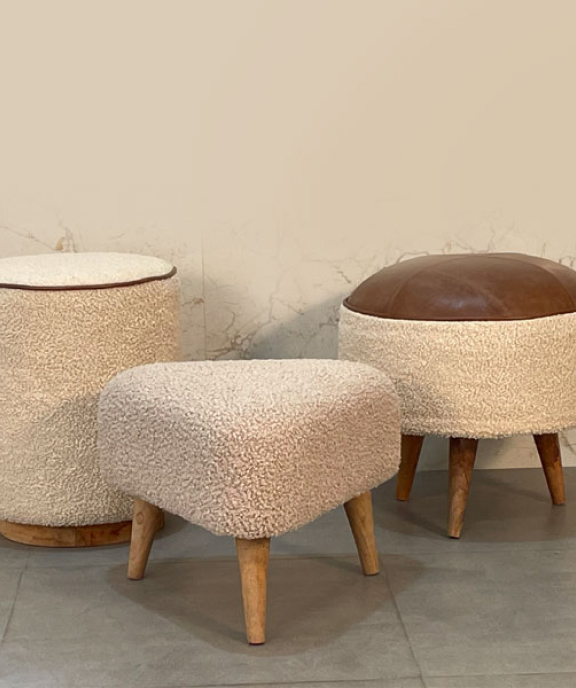Did you know that there are secrets to maintaining a sofa's longevity that you may not be aware of?
It can be frustrating when you invest in a sofa only to find that it loses its comfort and appeal too quickly. But what if there are specific factors that contribute to a durable and long-lasting sofa?
By exploring these factors, we can potentially revolutionize the way we approach buying sofas in the future.
So, let's dive into the secrets of sofa longevity and discover how they can change the way we make our furniture choices.
Key Takeaways
Are you aware of the secrets to maintaining the longevity of your sofa? It can be frustrating when you invest in a sofa only to find it losing its comfort and appeal too quickly. But what if there are specific factors that contribute to a durable and long-lasting sofa? By exploring these factors, we can potentially change the way we approach buying sofas in the future. Let's dive into the secrets of sofa longevity and discover how they can influence our furniture choices.
Choosing the Right Frame
When choosing a sofa frame, it's important to opt for hardwood materials such as kiln-dried oak, ash, or beech. These types of wood offer greater durability and longevity compared to soft woods like pine. A sturdy frame is essential for ensuring the sofa's long-lasting comfort.
To evaluate the cushion comfort, you should sit on the sofa and feel the support it provides. High resilient (HR) foam is a key factor in cushion comfort, as it offers both plushness and durability. High resilient foam retains its shape over time, provides excellent support, and ensures a comfortable seating experience for many years.
When inspecting the frame, look for solid joinery with wooden dowels, corner blocks, or metal screws and brackets. This type of construction ensures that the frame remains sturdy, supporting the cushions and maintaining the overall comfort of the sofa.
Importance of Solid Joinery
Solid joinery is essential for ensuring the durability and long-lasting quality of a sofa. It not only adds to the overall sturdiness of the hardwood frame but also contributes to the comfort and support of the cushions.
Proper maintenance is crucial in identifying any signs of poor joinery, such as loose or creaking joints, which can lead to structural instability over time. When examining a sofa, pay close attention to how the joints are connected. Look for indicators of solid joinery, such as wooden dowels, double wooden dowels, wooden corner blocks, or metal screws and brackets.
These methods of connection provide greater stability and durability compared to sofas held together solely by staples, nails, or glue, which are more susceptible to wear and tear.
Ensuring solid joinery in the construction of a sofa is a vital step towards guaranteeing its longevity and maintaining its structural integrity.
Understanding Spring Types
Understanding the different types of springs is crucial when choosing a sofa that's both durable and comfortable. Sinuous springs, also known as serpentine springs, offer several advantages. They're cost-effective, provide even support, and are highly durable. These springs are shaped like an S and run from the front to the back of the seat, creating a strong foundation for cushions.
On the other hand, high-end sofas may feature eight-way hand-tied springs, which offer exceptional comfort and longevity. These springs are meticulously tied by hand in eight different directions, ensuring superior stability and support.
Whether you opt for the cost-effective sinuous springs or the luxurious eight-way hand-tied springs, it's important to choose a sofa with springs that feel close together and firm. Understanding the benefits of each spring type will help you make an informed decision when investing in a sofa that will last a long time.
Evaluating Cushion Fillings
When it comes to evaluating cushion fillings for sofas, it's important to consider both comfort and durability. There are various types of cushion fillings available, each with its own pros and cons.
Polyurethane foam is a low-cost option that may feel firm at first, but it tends to deteriorate quickly over time. High-density foam can also feel hard, while low-density foam may lose its shape and support. On the other hand, high-resilient (HR) foam provides both comfort and longevity, making it a good choice.
Durability is another important factor to consider. Polyester fiber is inexpensive but tends to flatten quickly, so it may not be the best option for long-lasting comfort. For a luxurious and comfortable option, goose down mixed with feathers is unparalleled. However, it requires high maintenance to keep it in good condition.
Selecting Durable Fabrics
When choosing a durable fabric for your sofa, it's important to consider how well it will hold up over time and whether it suits your lifestyle and usage habits.
Comparing different fabric patterns is key, as woven patterns tend to be more durable than printed ones, ensuring that your sofa will last longer.
It's also important to consider fabric maintenance, as this will help preserve the appearance of your sofa. Fabrics like cotton and linen are good choices for durability, while synthetic microfiber offers stain resistance and the ability to mimic different fabrics.
However, be cautious with blends of natural and synthetic fibers, as they can pill within a year. Wool and leather are strong options, but they can be more expensive.
Understanding the pattern and maintenance needs of the fabric will help ensure the longevity of your sofa, so it's crucial to choose a fabric that suits your specific needs.
Assessing Wood Types
When evaluating the durability of a sofa frame, it's important to consider the type of wood used in its construction. Hardwoods such as kiln-dried oak, ash, or beech are highly recommended as they're more resilient compared to soft woods like pine, which may deform or become unstable over time.
It's crucial to avoid frames made of particleboard, plastic, or metal, as these materials may not provide the long-lasting durability you desire.
Additionally, inspect the joinery of the frame to ensure it's solidly constructed using wooden dowels, double wooden dowels, or wooden corner blocks. Metal screws and brackets can also be used for joining.
Exploring Joinery Techniques
Inspecting the joinery of a sofa frame is crucial to ensure its durability. The type of joinery technique used directly impacts the overall comfort and stability of the sofa.
While metal joinery offers strength and durability, it can sometimes detract from the comfort of the sofa due to its rigid nature. On the other hand, wooden dowels, double wooden dowels, and corner blocks provide a solid connection and contribute to the sofa's comfort.
Metal screws and brackets, while sturdy, may not offer the same level of comfort as wooden joinery.
It's essential to consider the pros and cons of each joinery technique to find a balance between durability and comfort when choosing a long-lasting sofa.
Examining Spring Quality
When evaluating the quality of a sofa's springs, it's important to assess their firmness and arrangement to ensure long-lasting comfort and support. High-end sofas often feature eight-way hand-tied springs, which are known for their durability and ability to maintain consistent support over time.
These springs are expertly crafted to distribute weight evenly, preventing sagging and ensuring a more comfortable seating experience. By prioritizing sofas with quality spring arrangements, such as hand-tied springs, you can significantly enhance the longevity and resilience of your furniture, making it a more satisfying and enduring investment in comfort and style.
Comparing Fabric Durability
When choosing a sofa that will provide long-lasting comfort and support, it's important to consider the durability of different fabric options. One popular choice is synthetic microfiber, which offers stain resistance and durability, making it a practical option for high-traffic areas. However, it may not have the same luxurious feel as natural fabrics.
On the other hand, fabrics like cotton and linen are known for their durability and breathability, which can enhance comfort. Synthetic microfiber may feel less breathable and may not offer the same level of comfort.
It's crucial to understand the pros and cons of synthetic microfiber and its impact on overall comfort when deciding on the fabric durability of your sofa.
Frequently Asked Questions
How Can I Protect My Sofa From Pet Damage and Scratches?
To protect your sofa from pet damage and scratches, there are several strategies you can employ. One option is to use pet-proof covers that are specifically designed to withstand the wear and tear caused by pets. These covers can be easily removed and washed, ensuring that your sofa stays clean and protected.
Another effective method is to train your pets to use scratching posts instead of your sofa. By providing them with alternative surfaces to scratch on, you can redirect their behavior and prevent them from damaging your furniture. Be sure to reward and praise your pets when they use the scratching posts to reinforce this positive behavior.
In addition to covers and training, you can also use deterrent sprays to discourage your pets from scratching your sofa. These sprays are usually formulated with scents that are unpleasant to pets, deterring them from approaching and scratching the furniture. However, it's important to test the spray on a small hidden area of the sofa first to ensure that it doesn't cause any damage or discoloration.
Regularly trimming your pet's nails is another important step in protecting your sofa. Shorter nails are less likely to cause scratches and damage to the fabric. If you're not comfortable trimming your pet's nails yourself, you can take them to a professional groomer or veterinarian who can do it for you.
What Are Some Common Mistakes People Make That Shorten the Lifespan of Their Sofa?
To extend the lifespan of your sofa, there are several common mistakes you should avoid. Firstly, it's important to protect your sofa from spills by using fabric protectors and ensuring proper cushioning. This will help prevent stains and damage to the fabric. Additionally, investing in a sofa with a sturdy frame, quality joinery, and durable fillings is crucial. These factors contribute to the overall durability and longevity of the sofa.
Another mistake to avoid is neglecting your sofa and failing to provide regular maintenance. This includes vacuuming and spot cleaning the fabric, as well as fluffing and rotating the cushions to prevent wear and tear in specific areas. By taking these simple steps, you can significantly prolong the lifespan of your sofa and keep it looking and feeling its best for years to come.
Are There Any Special Cleaning or Maintenance Tips for Extending the Life of a Sofa?
To extend the life of your sofa, it's important to follow a regular maintenance schedule. This includes vacuuming the sofa to remove dust and dirt, as well as rotating the cushions to distribute wear evenly. Additionally, it's crucial to spot clean spills immediately to prevent stains from setting in. Use a soft brush or vacuum to gently remove any debris or dirt from the fabric. By taking these steps, you can help keep your sofa looking and feeling great for years to come.
How Can I Prevent Fading and Discoloration of My Sofa Fabric Over Time?
To prevent your sofa fabric from fading and discoloring over time, there are several steps you can take. First, consider using UV-protective sprays on the fabric. These sprays create a barrier that helps block out harmful UV rays from the sun, which can cause fading. Additionally, it's important to keep your sofa out of direct sunlight as much as possible. This could mean rearranging your furniture or using curtains or blinds to shield the sofa from the sun's rays. Another helpful tip is to rotate the cushions regularly. This ensures that they wear evenly and prevents one area of the fabric from being constantly exposed to sunlight. In terms of cleaning, it's important to vacuum your sofa regularly to remove any dust or debris that could cause discoloration. When spot-cleaning, be sure to use fabric-friendly products that won't damage or fade the fabric. By following these preventive measures, you can help keep your sofa fabric looking fresh and vibrant for years to come.
Are There Any Environmental Factors That Can Affect the Longevity of a Sofa, Such as Sunlight Exposure or Humidity?
Exposure to sunlight can have a detrimental effect on the longevity of a sofa. The UV rays from the sun can fade the fabric and weaken it over time. This can result in a sofa losing its color and becoming more prone to tears and fraying. To protect your sofa from sunlight damage, it is important to place it away from direct sunlight or use window coverings to block out the sun.
In addition to sunlight, high humidity levels can also impact the lifespan of a sofa. Excessive moisture in the air can create a breeding ground for mold and mildew, which can cause the fabric and cushions to deteriorate. To prevent mold and mildew growth, it is recommended to use a dehumidifier in areas with high humidity or to ensure proper ventilation in the room where the sofa is placed.



